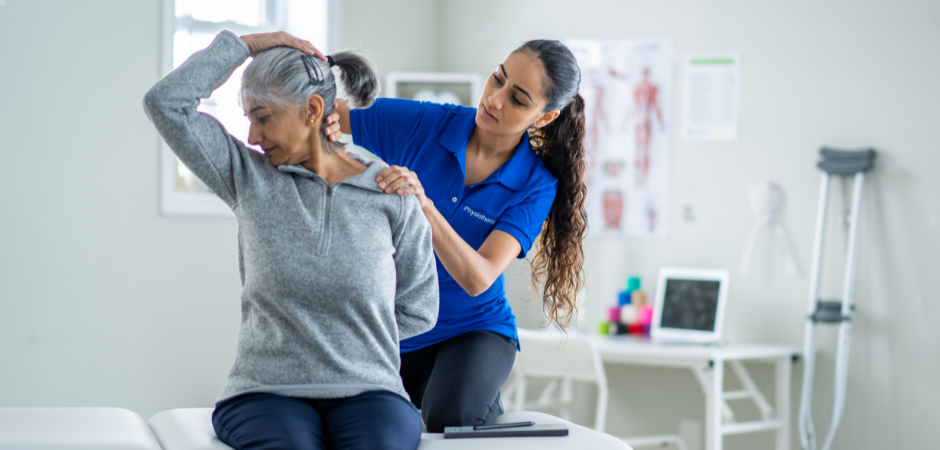Moving Lives, Shaping Futures | The Arthritis Movement>About Arthritis>Arthritis Insights>Keeping Active>Daily Stretches for Joint Health
November 2024
Arthritis can make it difficult to move freely and comfortably, but regular stretching can play an essential role in maintaining joint health, reducing stiffness, and improving flexibility.
Stretching keeps muscles and joints flexible, which is especially helpful for people with arthritis as it can reduce stiffness and promote a better range of motion.
This article covers the importance of stretching for arthritis and provides a guide to gentle daily stretches you can incorporate into your routine.

Arthritis often leads to joint stiffness, pain, and a reduced range of motion. Over time, these symptoms can limit physical activity and make daily tasks more challenging. Stretching exercises help by:
With consistency, stretching can become an important part of your arthritis management routine, helping you to stay active and engaged in the activities you enjoy.
Before diving into a daily stretching routine, consider the following tips to make your experience safe and enjoyable:
#1. Start Slow: If you're new to stretching or have high levels of stiffness, take it slow and ease into each movement.
#2. Warm up: Do a brief warm-up, like gentle marching or arm swings, to get your muscles and joints warmed up before stretching.
#3. Focus on Your Comfort Zone: Never push yourself into painful positions. Only stretch as far as you feel comfortable.
#4. Breathe Deeply: Deep breathing helps relax your body and can improve the effectiveness of each stretch.
#5. Hold Each Stretch: Try to hold each stretch for 10-30 seconds without bouncing, as bouncing can strain your muscles and joints.
#6. Be Consistent: Daily stretching is ideal, but even stretching 3-4 times a week can yield benefits over time.
Here’s a simple stretching routine you can incorporate into your daily life. These stretches target various joints, including those in the
hands, neck, shoulders, back, hips, knees, and ankles. Always consult with your healthcare provider before starting any new exercise
program.
1. Finger & Hand Stretch
Hand stretches help to alleviate stiffness in the fingers and improve dexterity, which is particularly beneficial if arthritis affects your hands.
How to do it:
2. Neck Stretch
Neck stiffness is common in people with arthritis. This gentle neck stretch helps reduce tension in the neck and upper back.
How to do it:
3. Shoulder Roll
Shoulder rolls are great for reducing tension and improving circulation in the shoulder area.
How to do it:
4. Hip Flexor Stretch
Tight hip flexors can make it difficult to walk and sit comfortably, so keeping them flexible is key.
How to do it:
5. Knee Stretch (Seated Leg Extension)
Knee stretches can help to alleviate stiffness and pain in the knees, making it easier to perform activities like walking and climbing stairs.
How to do it:
6. Ankle Stretch (Ankle Circles)
Ankle stretches promote flexibility and circulation, which is essential for stability and balance.
How to do it:
7. Hamstring Stretch
Hamstring stretches help keep the muscles at the back of your thighs flexible, which can reduce strain on your knees and back.
How to do it:
8. Wrist Stretch
This stretch is beneficial for those with arthritis in the wrists, helping to reduce stiffness and improve mobility.
How to do it:
Incorporating a daily stretching routine is a small yet powerful way to manage arthritis symptoms and keep your joints healthy. These gentle stretches are designed to increase flexibility, reduce stiffness, and improve your range of motion, making it easier to perform daily activities with less discomfort. Remember, consistency is key, and these stretches should be done regularly to maximise their benefits.
If you’re new to stretching, or if you’re experiencing severe pain, always consult with a healthcare provider or physical therapist before starting a new exercise routine. They can guide you on the safest ways to stretch and offer advice specific to your condition.
Stretching doesn’t require much time or equipment, and you can even perform many of these stretches while seated. Make stretching a part of your daily routine, and over time, you may notice improvements in your mobility, comfort, and overall wellbeing.
Source:
1. Versus Arthritis. Full Body Stretching [cited 15 Nov]. Available from: https://versusarthritis.org/about-arthritis/exercising-with-arthritis/full-body-stretching/
2. Arthritis Foundation. Get in the Habit of Stretching [cited 15 Nov 2024]. Available from: https://www.arthritis.org/health-wellness/healthy-living/physical-activity/getting-started/get-in-the-habit-of-stretching
Arthritis Queensland and Arthritis New South Wales are Members of The Arthritis Movement. Please note that there will be a transition period while our financial and administrative structures are finalised. During this time, we ask that you still donate and make other payments to Arthritis Queensland or Arthritis NSW depending on which state you reside in, which will continue to issue receipts.